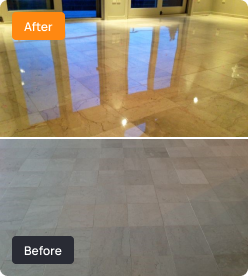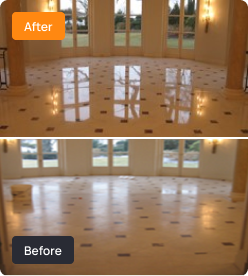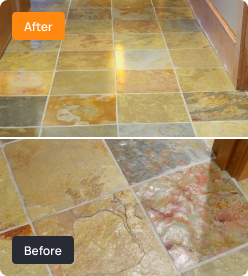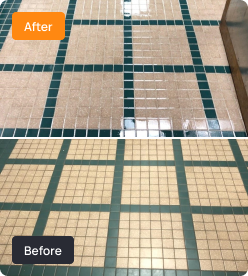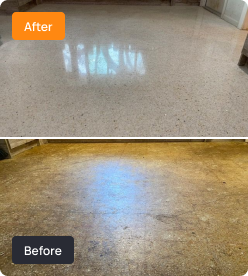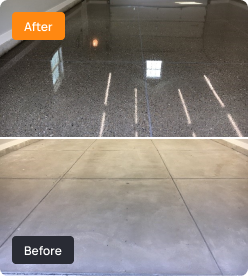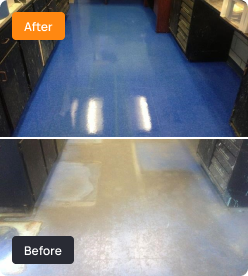How to get rid of Mold and Mildew in your Shower?
Have you ever noticed those unsightly molds on your walls and surfaces in the bathroom? They certainly don’t make for a pleasant sight, do they? Not only do molds ruin the aesthetics, but they also indicate an unhealthy state of your bathroom. If you’ve been dealing with a recurring mold problem and your search for […]
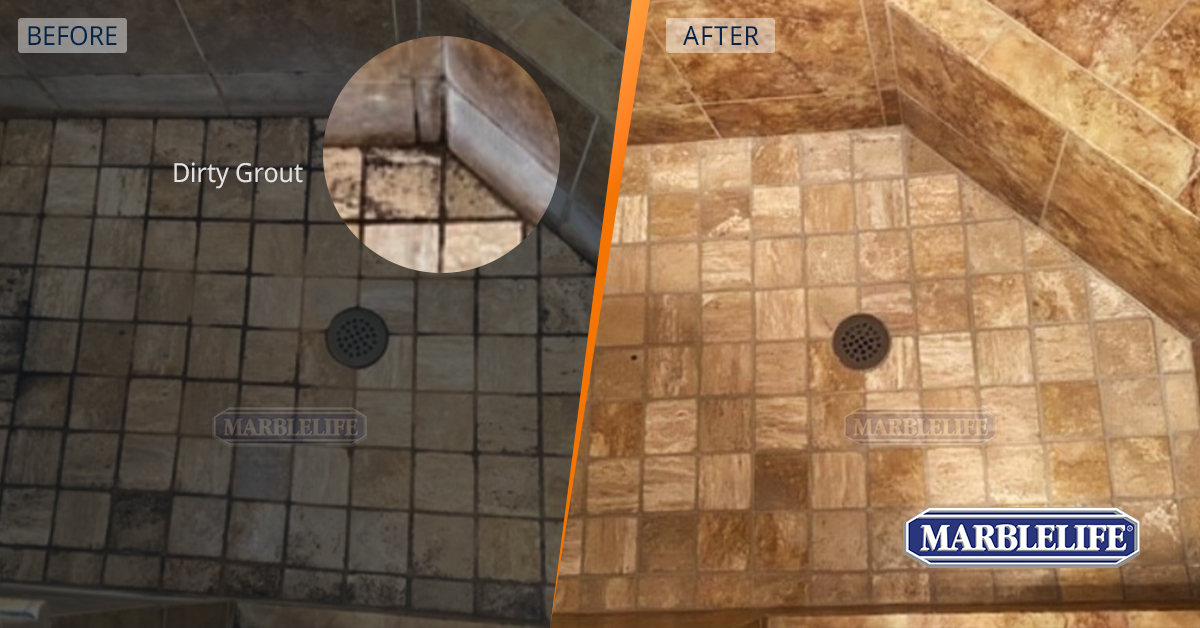

Have you ever noticed those unsightly molds on your walls and surfaces in the bathroom?
They certainly don’t make for a pleasant sight, do they? Not only do molds ruin the aesthetics, but they also indicate an unhealthy state of your bathroom. If you’ve been dealing with a recurring mold problem and your search for a solution has led you here, you’re in the right place.
Understanding Mold and Mildew
Mold and mildew are fungi that thrive in moist, humid environments, especially in places like bathrooms and showers. When not addressed in a timely manner, these organisms can rapidly multiply, posing potential health risks. Symptoms such as headaches, breathing difficulties, and heightened allergic reactions can often be attributed to or exacerbated by the presence of mold, their spores, and their waste. Beyond health implications, mold and mildew can also mar the appearance of grout and caulk over time.
Interestingly, what we often identify as mold or mildew on surfaces is not the organism itself but its waste. There’s certainly nothing appealing about either their appearance or effects.
Why tackling mold and mildew is so important?
Mold and mildew present more than just an unsightly issue; they come with health risks. These fungi are known to trigger respiratory allergies and can exacerbate conditions like asthma.
Their damage doesn’t stop at health implications. Mold and mildew can damage bathroom surfaces and building materials, including walls, ceilings, and grout. This often results in unsightly stains and accelerated deterioration. Moreover, their characteristic musty odor is far from pleasant.
But what leads mold and mildew to flourish, especially in showers? Mold requires moisture and organic material for sustenance. Combine this with a dark, sun-deprived space, and you have an environment where mold thrives. While mold is omnipresent, attempting to block its airborne spores isn’t a practical strategy. This is because mold spores are everywhere; they can latch onto us from outdoors, attaching to our clothing, hair, or shoes. Although air filtration is a measure, we invariably introduce spores when we enter our homes. Instead of merely blocking spores, our focus should be on:
- Identifying factors that create a hospitable environment for mold and making it inhospitable.
- Addressing early signs of its return.
- Taking action if mold has already established a presence.
Common Causes of Moisture in Your Shower
Mold thrives in damp environments, and your bathroom offers a perfect hideout. Beyond the apparent moisture sources, some silent culprits may contribute to mold and mildew growth beyond the obvious moisture sources. Let’s dive into these often-overlooked moisture sources:
- SHOWER: Naturally, showers generate ample moisture. This moisture raises humidity levels in the bathroom, creating a mold-friendly setting. However, showers aren’t the sole culprits.
- TOILET: Toilets are a secondary, albeit lesser, moisture source.
- LEAKING PIPES: Hidden leaking pipes, especially behind walls, are insidious. You might remain oblivious to their damage until you spot water stains on absorbent materials like drywall or detect moisture with a meter. Such leaks can cause mold to grow within walls or even breach tiles by seeping through mortar and grout.
- FLOOD DAMAGE: Floods and leaky roofs underscore water’s destructive capability. Beyond the immediate damage, lingering moisture can foster mold growth in dark recesses behind walls, necessitating removal, replacement, or treatment of affected areas.
For many, the primary concern is the mold in showers. However, before we zoom in on how to tackle shower mold, it’s essential to acknowledge and address less frequent but potentially severe sources.
During Hurricane Ian, MARBLELIFE’s headquarters recently faced a short-term flood reaching a depth of 8 inches. This flooding lasted less than two hours due to a parking lot storm drain being overwhelmed by the rain and runoff. Despite its brief duration, the flood caused over $30,000 in damages, affecting furniture, walls, and floor coverings and disrupting operations.
In the event of a flood, it’s imperative to act quickly:
- Immediate Response: Engage a water restoration company immediately, followed by a contractor for necessary repairs.
- Understanding Insurance: Familiarize yourself with what your insurance covers concerning water damage before any incidents.
- Contractor Contacts: Establish connections with reliable contractors in advance. Many may need similar services in emergencies like storms or freezing weather simultaneously. Pre-established contacts can be the difference between a speedy recovery or prolonged displacement.
- Pre-Planning: Many water restoration companies offer consultation sessions ahead of potential problems. They can provide advice on structural changes to minimize possible damages.
In the aftermath of MARBLELIFE’s flooding, we took several preventative measures were taken:
- Furniture Selection: Preference was given to water-resistant materials. Metal and glass furnishings were chosen over particle wood.
- Flooring Changes: Carpets were replaced with polished concrete floors or non-absorbent rubber pads, which could be quickly dried and reused in future flooding.
- Cabinet Materials: Traditional wood cabinets were replaced with durable metal and stone options.
- Warehouse Storage: Water-sensitive materials were stored off the ground, and items were pre-palletized for easy movement if necessary. A few strategic adjustments can drastically reduce potential damages.
While major hurricanes or storm surges might be rare, facing challenges like significant storms or frozen pipes is far more common. Preparation is crucial for a swift return to normalcy.
LEAKING PIPES & AIR CONDITIONER CONDENSATE
When mold appears outside the shower area, leaking pipes and condensation from air conditioners are frequently the culprits. These sources work insidiously, hidden from view, and often it’s a stain that alerts us to the problem. A moisture meter is a handy tool that can not only confirm moisture presence but also help trace the source of the leak, guiding us to the root cause. Depending on the situation, you might require a plumber or air conditioner technician, followed by a handyman, to address any resultant material damage.
Such issues, while frustrating, are generally one-time challenges.
However, our primary focus will be the persistent, day-to-day struggle with mold in our showers and bathrooms. This battle can vary between homes and even among different family members. But the silver lining is that we can manage and even enhance the situation. By understanding what mold requires and strategizing to make our bathrooms less conducive to mold growth, we can simplify maintenance by developing methods to combat mold effectively.
Identifying Signs of Mold and Mildew
With an understanding of why mold and mildew are unwelcome visitors, it’s time to learn how to detect their presence:
- Musty Odor: That unmistakable musty scent can be a telltale sign. If your bathroom has a persistent, unpleasant odor even after ventilating, mold and mildew are likely present. Trust your nose—it often serves as an early detection system. If there’s a smell, action is required.
- Discolored Spots: Mold and mildew can manifest in several hues. Look for black, green, white, or gray spots on your shower walls, ceilings, grout, or other areas. These discolorations, more often than not, indicate the presence of mold waste. To tackle the problem, you’ll need to get through this layer to the mold beneath.
- Mildew Film: If you have a shower curtain or liner, inspect it for a thin film of mildew, particularly along folds or at the bottom. This film may be discolored or fuzzy and often presents in shades of red. It’s an unmistakable sign that mold and mildew capitalize on a humid environment.
Mold and mildew can be elusive, hiding in concealed spots or areas that are challenging to access. Ensure you’re comprehensive in your checks, inspecting both evident areas and moisture-prone zones, like shower grout lines or behind fixtures.
Mold Behind the Caulk? Act Now!
If mold is visible behind your caulk, it’s a red flag that you have a steady influx of spores hunting for more colonizing spots. When your caulk appears moldy or if mold can be seen through transparent caulk, it’s time to take immediate action. At the bare minimum, the moldy caulk must be removed and replaced. The very presence of mold behind the caulk indicates one of two scenarios:
- The bond of the caulk to one or both surfaces has failed, allowing water to seep in.
- Mold resides in the gap that the caulk is supposed to seal.
Ignoring this prolongs your battle with mold, serving as a daily visual reminder that you have an issue. Moldy caulk is your cue to either call for professional assistance or, at the very least, replace the caulk. Delving deeper, you should also determine the cause of the caulk bond failure. Most caulk products are reliable for many years, provided they adhere to clean surfaces. Soap scum, though sometimes invisible, can hinder the caulk from establishing a proper bond. Before re-caulking, ensure your surface is spotless.
MARBLELIFE’s SOAP AND SCUM REMOVER can help you tackle soap and scum efficiently, a must if re-caulking is on your mold prevention checklist.
Preventive Steps Against Mold and Mildew
To uphold a sanitary bathroom environment, it’s essential to thwart mold and mildew’s onset. Here are some effective preventive measures:
Opt for Glass Doors over Curtains
Mold thrives on organic surfaces such as plastic but not on glass. Installing glass doors not only enhances the beauty of your shower but also resists mold formation. For easy maintenance, use MARBLELIFE SOAP-AND-SCUM REMOVER. This product effortlessly cuts through soap, saving both time and effort.
Choosing Between Walk-in Shower and Tub
Consider the utility of your tub. While it’s essential for families with young children or those dreaming of luxurious baths, many don’t frequently use it. As we age, walk-in showers become more attractive, sometimes negating the need for glass doors. They can be designed with a glass half-wall to open up space, ensuring better airflow and reduced chances of mold and mildew.
Rethink Tile Layout
Traditional tile floors can trap moisture due to counterintuitive grout lines. With larger tiles now available, one can have grout lines that run directly to the drain, promoting better water flow and minimizing moisture retention.
Lighting Considerations
Mold thrives in darkness. Bright, well-lit areas dry faster and have more UV radiation, which damages mold. Additionally, brighter lighting expedites evaporation, further reducing moisture.
Choosing Materials Wisely
Inorganic materials like GLASS do not support mold growth. You can prevent mold growth in concealed spaces by sealing porous surfaces such as concrete, marble, travertine, limestone, and grout. MARBLELIFE COLORSEAL is an effective solution that can seal the grout, prevent stains, and can be used to modify grout color for aesthetic purposes.
Assessing Shower Schedule
The frequency of shower usage can impact moisture retention. Understanding how your family’s schedule affects shower dry time can offer insights into mold problems and potential solutions.
Combatting Mold: The Essentials
Keeping your bathroom mold-free is not just about prevention; it also entails an active battle against the mold and mildew that does manage to take root. This fight against mold and mildew becomes more manageable with the right tools and knowledge.
Regular Cleaning and Maintenance
MARBLELIFE Mold And Mildew Stain Rremoved Cleaner effectively tackles mold and mildew. For stubborn soap scum, begin with MARBLELIFE SOAP AND SCUM REMOVER. Remember that mold and mildew removers degrade over time, so purchasing fresher, smaller quantities ensures effectiveness.
Eliminating Mold and Mildew
For those already dealing with mold and mildew, rapid action is crucial. MARBLELIFE Mold and Mildew Stain Remover is specifically formulated for stone and grout surfaces. Its efficacy surpasses ordinary bleach sixfold.
Routine Cleaning Steps:
- Spray and Soak: Apply MARBLELIFE Mold and Mildew Stain Remover generously on the affected areas and let it soak for about 10 minutes.
- Rinse: Post-soaking, rinse with clean water. Gently scrub using a nylon bristle brush or sponge to remove the remaining mold residue.
Always adhere to the instructions on cleaning product labels to ensure optimal results. Using trusted products like MARBLELIFE ensures your shower remains mold-free, clean, and refreshing. In conclusion, removing mold and mildew stains with the right products is straightforward, restoring your shower to its pristine state.
Reflecting on a Fresher, Mold-Free Shower Experience
Mold and mildew pose health threats, damage shower surfaces, and produce unwanted smells. However, with informed decisions and timely action, you can treat existing mold and prevent its recurrence.
Understanding and making strategic adjustments to your bathroom makes maintaining its cleanliness and mold-free state simpler. Emphasize the importance of good ventilation, routine cleaning, and choosing mold-resistant materials. Regularly check for excess moisture and ensure shower accessories are clean and stored appropriately.
For an even simpler solution against mold, consider using the MARBLELIFE MOLD AND MILDEW STAIN REMOVER CLEANER. This product is recognized for effectively treating mold on various shower surfaces.
With these strategies and MARBLELIFE’s solution, you can achieve a clean, mold-free bathroom, ensuring a healthier environment for all.


